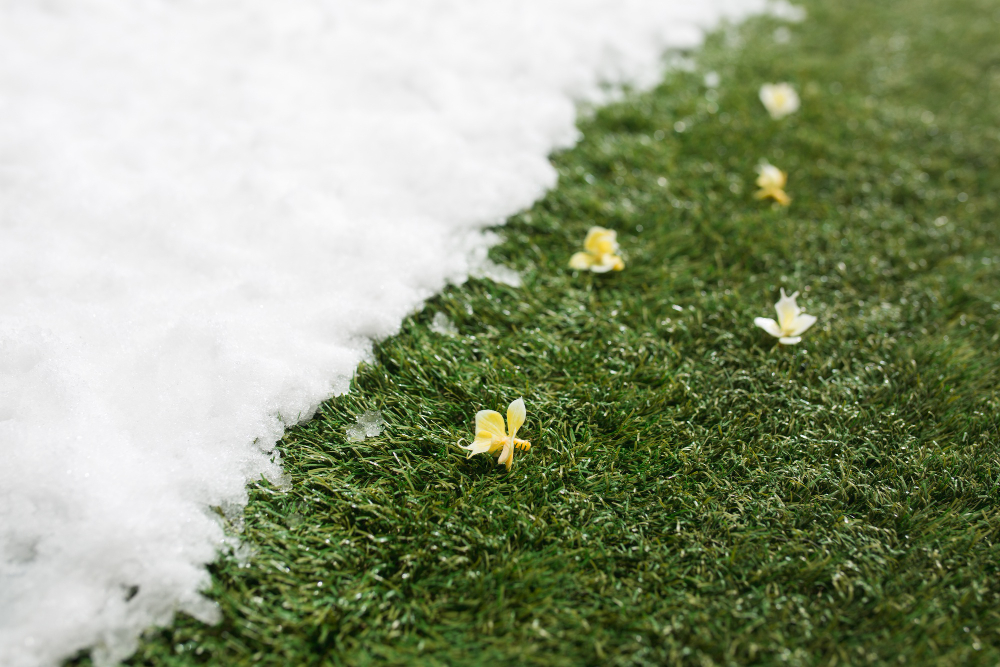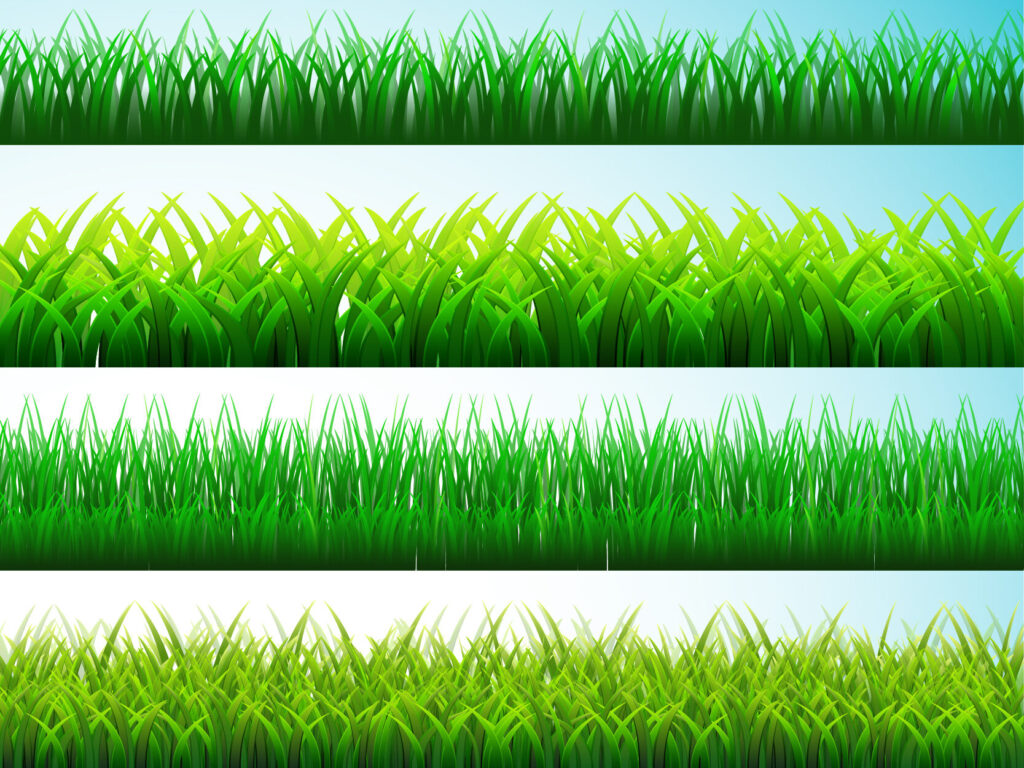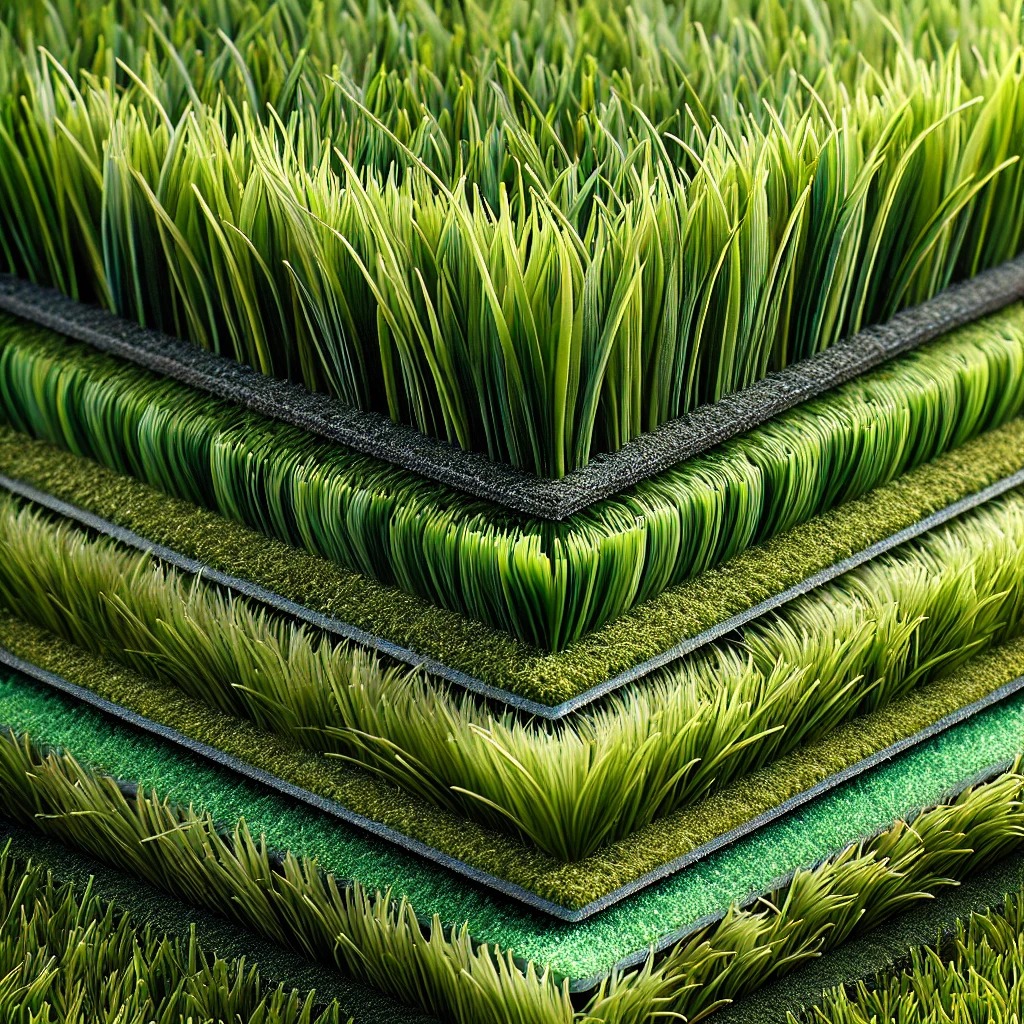
Care for Artificial Grass in Snowy Weather
Having artificial grass has been a game-changer for me, especially during the harsh winter months. While it looks beautiful year-round, I’ve learned that proper maintenance during snowy weather is crucial to keep it looking its best.
In this guide, I’ll share my tried-and-true methods for caring for artificial grass in snowy weather, ensuring it stays in top shape no matter how cold it gets.
1. Inspect and Secure Your Artificial Lawn
Check the Nails and Edges of Your Turf
Before the snow starts to fall, it’s essential to inspect your artificial lawn. I always take a few minutes to walk around the yard, checking that all the nails and edges of the turf are securely fastened. This small step can prevent significant issues, like the turf lifting or shifting, which can happen when the ground freezes and thaws repeatedly. By securing the lawn now, you’ll save yourself from dealing with potential damage later.
2. Clear Debris Regularly
Remove Leaves, Twigs, and Other Debris
Even in winter, debris like leaves and twigs can accumulate on your artificial grass. I make it a habit to clear away this debris regularly, using a soft broom or a leaf blower. This simple task prevents mold and mildew from forming under the snow, which can happen if debris is left unchecked. Plus, a clean surface looks much better and is easier to maintain throughout the season.
3. Handling Snow and Ice
Let Snow Melt Naturally on Artificial Turf
One of the most important lessons I’ve learned is to let snow melt naturally on artificial grass. Removing snow too aggressively can damage the turf fibers and the base layer beneath. While it might take a bit of patience, it’s the safest option for preserving your lawn’s integrity. Plus, this approach gives you a break from shoveling!
Shovel Snow with Caution
If you must clear snow, be cautious with your shovel choice. I always use a plastic shovel instead of a metal one, as it’s gentler on the grass. Rather than dragging the shovel across the turf, lift the snow and move it away carefully. This method prevents any unnecessary damage to the grass and keeps your lawn looking pristine.
4. Walking on Artificial Grass in Winter
Be Careful Walking on Frozen Turf
Walking on frozen artificial grass can be risky. The fibers can become brittle, and heavy foot traffic might cause them to break or flatten. When I need to walk on my lawn in the winter, I tread lightly and avoid any unnecessary movements. Limiting foot traffic as much as possible during cold spells helps preserve the grass’s quality and appearance.
5. Prevent Snow Accumulation
Avoid Piling Snow on Artificial Grass
Managing snow accumulation is key to protecting your artificial grass. I’ve found that it’s best to avoid piling snow in one spot. Heavy snow piles can put excessive pressure on the turf, potentially damaging the fibers or the base layer. Instead, I spread the snow evenly or move it to areas without artificial grass. This simple strategy helps maintain the lawn’s integrity throughout the winter.
6. Safe Practices for De-icing
Skip the Salt: Use Alternatives for De-icing
One hard lesson I’ve learned is that salt is not your friend when it comes to artificial grass. It can damage the turf and be harmful to the environment. Instead, I use alternative methods like sand or kitty litter, which provide traction without causing harm. There are also specialized de-icing products designed for synthetic turf that work well without risking damage.
7. Regular Winter Maintenance
Ongoing Winter Care for Your Artificial Lawn
Even in winter, regular maintenance is essential. I make a point to inspect the lawn frequently, addressing any minor issues like re-securing loose edges or clearing debris. Taking care of these small tasks promptly helps prevent bigger problems down the line. By maintaining your artificial grass throughout the winter, you’ll ensure it’s ready to bounce back beautifully in the spring.
FAQs about Maintaining artificial grass in winter
Can artificial grass be damaged by snow or frost?
Yes, while artificial grass is durable, snow and frost can still cause damage. Snow accumulation and frost heave can affect the turf fibers and the base layer. To avoid this, inspect and secure your lawn before winter, regularly clear debris, and handle snow with care.
What should I do if my artificial lawn is covered in snow?
If your artificial grass is covered in snow, it’s best to let the snow melt naturally. This avoids potential damage from aggressive snow removal. If you need to clear snow, use a plastic shovel and be gentle to avoid scraping the turf. Distributing snow evenly rather than piling it in one spot can also help protect your lawn.
How should I handle heavy rain or flooding on artificial grass?
Artificial grass drains well, so heavy rain usually isn’t an issue. However, in cases of severe flooding, clear any debris that might block drainage. Regularly checking and maintaining the drainage system will ensure water flows away properly, preventing waterlogging or damage to the turf.


